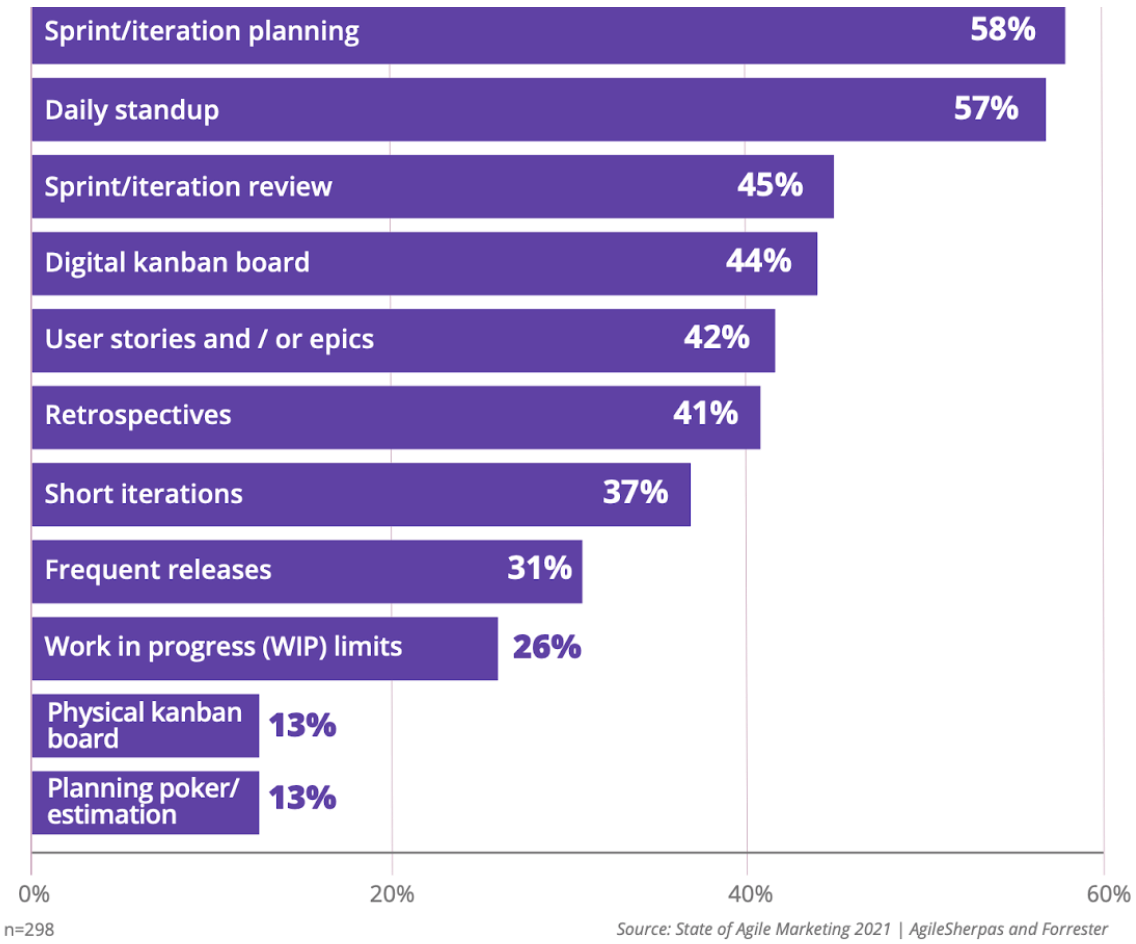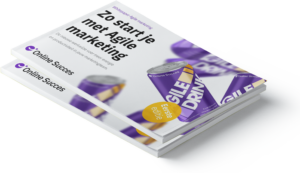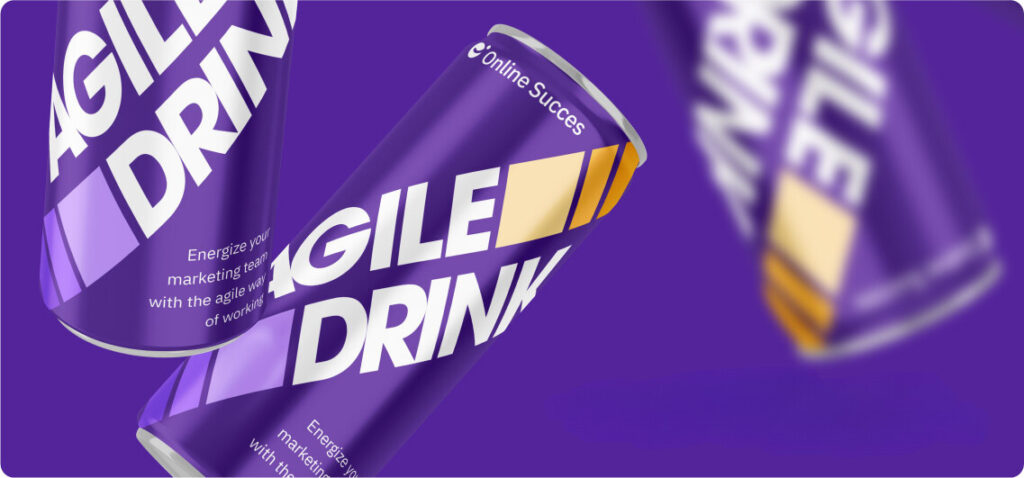Do you recognize this in your marketing team? The domino effect? One moment you think: “Everything is running smoothly, we’re doing well”. But then someone gets sick, which puts pressure on the entire team, leading to missed deadlines. And before you know it, your clients want to discuss your contract. You wonder: “How did we get here?” A good example of the domino effect.
And yes, dominoes are a typically Dutch thing (our own Robin Paul Weijers holds six world records). But for your marketing department, you’d rather have everyone remain healthy. Or even better, that your team continues to peak, the leads keep coming in and new campaigns are launched.
From Product Backlog Item to Retrospective; this article reveals the essential building blocks to support an Agile marketing team. This way, your team keeps running smoothly, even when things don’t go as planned.
Today’s deep dive
In the previous blog, you got an introduction to Agile marketing. You read about values and principles such as making decisions based on data and rapid iterations. About benefits such as happy teams and being better able to cope with change.
Agile is more than just a vision and mindset. It includes all the tools to organize work today. The report ‘The Annual State of Agile Marketing‘ by AgileSherpas provides a good insight into the popularity of various Agile tools.

Today we make Agile work for marketers a bit more concrete. We are therefore looking at practical building blocks to embrace Agile marketing.
Scrum is Agile but Agile is not always Scrum
When talking about Agile, it often also involves Scrum. Scrum is an Agile framework, but Agile is not always Scrum. For example, there are other Agile frameworks such as Kanban.
Both Scrum and Kanban contain the same core principles of Agile work but what is the difference? With Kanban, you organize the work in a continuous ongoing manner and with Scrum you organize the work in blocks of time, called Sprints. Both frameworks have advantages and disadvantages.
Scrum or Kanban?
Kanban has fewer events than Scrum and some teams find that pleasant. When other teams in your company already work via Scrum, there is much to be said for embracing this framework as a marketing team. You can then ride on the rhythm of those teams which creates connection and cohesion.
8 building blocks for an Agile marketing team
Okay, enough context. Below are the building blocks for your marketing team to start working Agile!
1. Product Backlog Items ( )
)
Creative ideas are exciting. That’s great, but at the same time, it’s also a risk. Does that campaign you’ve come up with still really align with the end user you have in mind? Agile work is about centralizing that user. Product Backlog Items help you with this.
Where you would base a traditional plan on a list of tasks, it’s different with Agile. You describe the work in the form of a Product Backlog Item (PBI). But how do you write a good PBI? Depending on your personal preference and your team, there are a few options.
1. As <role>, I want <user need>, so that I <result>.
As a marketer, I want to clean up our mailing list so I reduce our bounces and save costs.
Advantage: Focuses on user and result.
Disadvantage: Not concrete enough for some teams.
As <role>, I can <do>.
As a potential customer, I can watch a demo video of the product on YouTube.
Advantage: Short and to the point.
Disadvantage: Focuses on what the user can do, not on need.
3. <element, task>
Publish blog “11 best planning software for businesses of any size”
Advantage: Clearly states what needs to be done
Disadvantage: Misses link with end-user.
When writing Product Backlog Items, it is helpful to keep in mind the personas you have previously created with your team. You will also notice that “internal users” are part of some PBIs. Think, for example, of the HR director or a colleague from your marketing team.
My tip is to start small with one of the above templates and experience along the way which form fits best with you and your team. We haven’t yet talked about the size of a PBI (the amount of work). You’ll read more about this later. Hier lees je later meer over.
2. Epics ( )
)
Following on from Product Backlog Items are Epics. An Epic consists of several PBIs and actually describes a large amount of work. It’s good to know that Epics are not officially part of the Scrum framework.
Example of an Epic
As a marketing manager, I want an alternative to Google Analytics 4 so that we protect the privacy of our customers and own our data.
Product Backlog Items for this Epic could include researching alternatives to Google Analytics, testing these solutions and presenting the options to senior management, making a decision, etc. Remember these PBIs, because we are going to connect them with the next instrument in Agile working: the Backlog.
3. Backlog ( )
)
The backlog is a collection place for all the work you want to do with your team or think you might do. The latter is an important nuance: along the way, you will discover that priorities change, causing certain work on the backlog to be dropped or changed. Cleaning and refining the backlog is also called backlog refinement. The backlog consists of… (you guessed it) PBIs, tasks, bugs, etc. But which backlog items do you work on? You determine this during the Sprint or iteration planning.
4. Sprint- or iteration planning ( )
)
Agile work can be based on so-called Sprints. Sprints are part of the previously discussed Scrum framework and are set blocks of time. A common period for a Sprint is two weeks. During the Sprint Planning, you look ahead with your team and determine which Product Backlog Items have the most impact to work on in the upcoming Sprint. Then you decide which items are actually part of the Sprint and what you want to achieve with the Sprint. This creates focus and responsibility and so the team picks up the right things at the right time.
When your marketing team uses the Kanban framework, you actually don’t talk about Sprints and Sprint Planning. This is because with Kanban, you organize the work in a continuous ongoing manner. If a PBI is ready, the team simply picks up the next PBI (To Do). You can even work without a backlog, but this is not recommended. It’s important to regularly refine your backlog. Otherwise, it might happen that tasks are picked up by the team that are actually not important at all.
Eventually, you want your marketing team to also work with focus. For this reason, an iteration planning is regularly carried out. An iteration is a kind of Sprint, but you are more flexible in how you use it. An iteration does not necessarily have to last two weeks, for example. You can link an iteration to certain epics, themes, or even marketing campaigns. Depending on what works best for your team.
5. Daily Scrum ( )
)
You have probably seen it in American football and rugby: the team gathers in a small circle before the game starts. They call this the huddle. This quickly briefs the team and boosts team spirit. You do something similar in Agile. Every morning you have a so-called Daily Scrum. It is a meeting of maximum fifteen minutes with the goal of inspecting the progress of the work and adjusting the backlog if necessary. Ideally, you do this standing instead of sitting and at a fixed time. This reinforces the idea that the meeting is short and concise and that you are not wasting each other’s time.
During this meeting, all marketers, for example, answer these questions:
- What did I work on yesterday?
- What am I working on today?
- What is stopping me? (impediments, also known as blocking issues or impediments)
Daily Scrums improve communication, identify obstacles, help in making quick decisions and thereby eliminate the need for other meetings.
6. Iteration review ( )
)
You might have noticed it already; Agile is about turning ideas into value. The iteration review is therefore a work session with the entire team in which you evaluate the outcome of the Sprint / iteration and discuss possible changes. Scrum calls this the Sprint Review.
During the review, the team shows each other the progress made. These are positive meetings where the team shows what the objectives were, which tasks were ticked off and how the iteration went. An important part are the demos that show concrete deliverables to all involved such as customers and other stakeholders. It’s a time to ask questions, share new applications and give each other feedback.
7. Retrospective ( )
)
During the review, you’ve celebrated successes and presented deliverables. In addition, Agile teams use so-called Retrospectives. Like the review, you organize this separate meeting after your iteration is completed. During this meeting, you critically look at the Agile process based on the last iteration. The goal is to think of ways to raise the quality and effectiveness of the work in the future.
During the retrospective, everyone can independently answers these questions:
- What went well?
- What could have gone better?
- What have I learned?
- What are still question marks for me?
Based on this output, you together choose the most relevant learnings to make your next Sprint or iteration run smoother.
8. The board ( )
)
Then we have the so-called board. It is an indispensable tool for visualizing work and making progress transparent. Depending on the framework you choose, you use either a Scrum or Kanban board. A Kanban board includes all active tasks, organized into columns such as To Do, In Progress, and Done. This allows you to quickly see which Product Backlog Items the team wants to execute, which PBIs are in progress and which PBIs are already completed. A Scrum board is very similar, but it focuses on the items within a Sprint.
A commonly used tool for implementing a Kanban or Scrum Board is the software called Jira from Atlassian. There is even a free version. Of course, you can also use a physical board that you place in a prominent spot in your marketing department!
The next step: start experimenting with Agile marketing
Boards are increasingly being used within marketing teams. Whether you use a digital or physical board; it is an accessible tool to experiment with Agile practices within your marketing team. Below is a possible step-by-step plan:
- Propose to your team to start experimenting with Agile practices
- Explain why you want to experiment with Agile, what the goals are and what Agile delivers
- Choose a small project that you want to implement in an Agile way
- Let your team decide which responsibilities they will take on
- Choose between a digital or physical board
- Brainstorm the necessary Product Backlog Items (PBIs) and possibly Epics.
- Place all items on the Backlog.
- Discuss each Product Backlog Item, estimate the time required and assign an owner to each item
- Prioritize Product Backlog Items and move them to the To Do column to provide an overview for the next two weeks
- Your team can get started!
- Meet daily (Daily Scrum) to discuss progress. Limit other meetings (e.g., a weekly project meeting)
- Evaluate after two weeks how it went! (Review + Retrospective)
In the next blog, we will delve deeper into the roles within Agile teams and the practical case for a marketing team. We will also go more into detail about the Scrum framework. This way, you make sure to hit the ground running.
Over to you
Do you have experience with Agile practices in marketing? Or are you excited about other Agile instruments for your team? Share them below and inspire readers with your insights.



